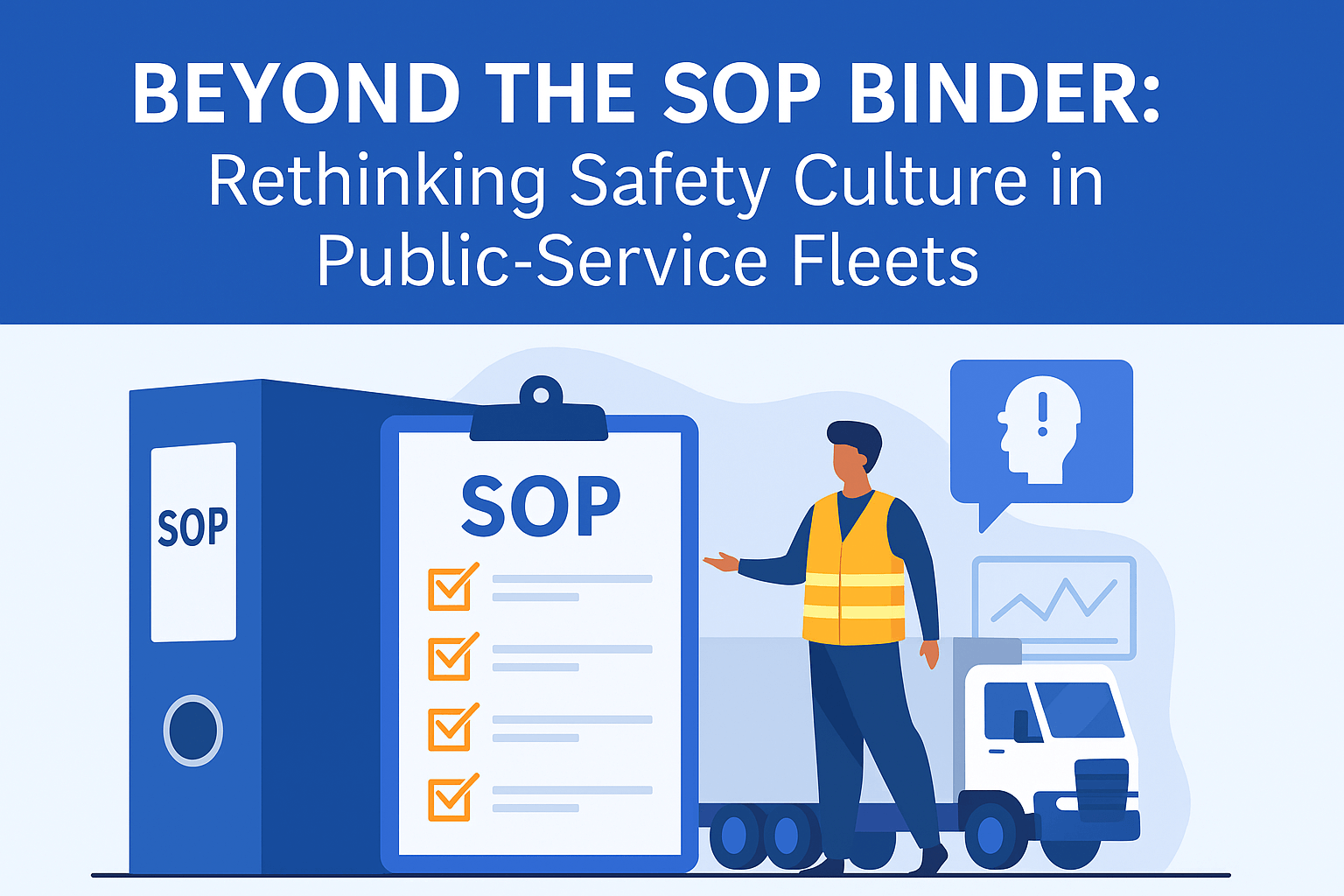
Navigating the world of commercial vehicle compliance can be complicated, and CSA scores play a pivotal role in maintaining a thriving transportation business. For carriers and drivers, understanding the implications of these scores is crucial for ensuring safe operations and securing a competitive edge in the industry. Do you know your CSA score and how it can impact your business?
In this blog post, we’ll delve into the intricacies of CSA scores, the Safety Measurement System (SMS), and how you can improve and maintain a favorable score to enhance your safety performance, attract clients, and reduce insurance premiums.
Key Takeaways
- The CSA Program evaluates carriers’ safety performance and intervenes with high-risk carriers to address violations.
- Understanding your CSA score is essential for improving overall safety performance and reducing costs such as insurance premiums, client acquisition, and regulatory compliance.
- Strategies for improving a CSA score include hiring/screening drivers carefully, providing driver training & education, ensuring vehicle maintenance & inspections regularly, monitoring data from the SMS system continuously, and implementing continuous improvement strategies proactively.
Understanding the CSA Program
The Federal Motor Carrier Administration (FMCSA) has initiated the Compliance, Safety, Accountability (CSA) program. It aims to check motor carrier safety and:
- Boost road safety
- Make carriers responsible for their performance.
- Utilize performance data to evaluate carriers and drivers.
- Ensure that they maintain a top-notch safety record.
- Remain in compliance with federal regulations.
However, the question remains: How does the CSA program measure safety performance? The answer lies within the carrier Safety Measurement System (SMS), a data-driven system that assesses carriers’ safety performance based on seven Behavior Analysis and Safety Improvement Categories (BASICs):
- Unsafe Driving
- Hours-of-Service Compliance
- Driver Fitness
- Controlled Substances/Alcohol
- Vehicle Maintenance
- Hazardous Materials Compliance
- Crash Indicator
Next, we will examine the role of CSA in road safety and the workings of the SMS.
CSA’s Role in Road Safety?
The CSA program is critical in promoting road safety by ensuring that carriers and drivers uphold their responsibility for maintaining safety. Through measurement, safety evaluation, and intervention, CSA identifies high-risk carriers and addresses safety violations.
This data-driven approach allows the FMCSA to pinpoint high-risk motor carriers, including motor carriers with elevated crash risk, and enforce necessary corrective actions to ensure all road users remain safe.
The Safety Measurement System (SMS)
The SMS is the backbone of the CSA program, providing a comprehensive evaluation of carriers’ safety performance based on the seven BASICs. These categories include:
- Unsafe driving
- Vehicle maintenance
- Driver fitness
- Controlled substances/alcohol
- Hazardous materials compliance
- Cargo-related
- Crash indicator
By analyzing data from roadside inspections, crash reports, and other safety-related factors, the SMS assigns scores to carriers in each of the seven BASICs, enabling the FMCSA to identify high-risk carriers and intervene accordingly.
SMS data is updated monthly to ensure evaluations are based on the most recent information. To understand the severity of each violation, consult the SMS Methodology handbook, which provides valuable insights into calculating CSA scores.
Decoding Your CSA Score
Having grasped the CSA program and SMS, understanding the factors influencing your CSA score becomes vital. A CSA score is a percentile score ranging from 0 to 100, reflecting the driving and safety habits of the drivers belonging to a specific carrier’s group. Recognizing the difference between favorable and unfavorable scores is essential for maintaining a safe and compliant operation.
We will examine the calculation factors and differentiate between good and bad scores to better comprehend your CSA score.
Calculation Factors
CSA scores are calculated using various data sources, such as roadside inspections, crash reports, and other safety-related factors. These factors are categorized into the seven BASICs used to evaluate carriers’ safety performance.
The SMS comprehensively assesses a carrier’s safety performance by considering crash severity, time elapsed since the event, and annual vehicle miles traveled.
Good vs. Bad CSA Scores
A good CSA score is closer to 0, indicating a lower safety risk, while a bad score is closer to 100, reflecting increased safety risks. It’s essential to be aware of the intervention thresholds for CSA scores, as carriers with scores exceeding these thresholds may be subject to FMCSA investigations and interventions.
For example, thresholds for different categories are:
- Unsafe Driving: 65%
- Crash Indicator: 65%
- HOS Compliance: 65%
- Hazardous Materials: 60%
- Passenger Carriers: 50%
Carriers need to understand the difference between good and bad CSA scores, as a favorable score can result in lower insurance premiums, fewer DOT audits, and a better reputation among clients. Conversely, a high CSA score may result in increased insurance premiums, more frequent audits, and potential issues with client acquisition.
How to Check Your CSA Score
Checking your CSA score is a straightforward process that can provide valuable insights into your safety performance and areas for improvement. Regular score review allows you to uphold a robust safety record and meet regulatory requirements.
So, how is your CSA score accessed? We’ll guide you through the steps to access your score on the FMCSA website.
Accessing the FMCSA Website
To check your CSA score, follow these steps:
- Visit the official FMCSA website.
- Log in using your carrier name or DOT number.
- This process will grant you access to your score and the performance data that has been used to calculate it.
Regular monitoring of your CSA score informs you about your safety performance and helps you make necessary operational adjustments.
Understanding Your Score
Upon accessing your CSA score, analyzing the data and identifying potential areas of improvement is vital. By focusing on the seven BASICs and pinpointing specific factors contributing to a high score, you can develop targeted strategies for addressing safety concerns and enhancing your overall safety performance.
Remember, maintaining a safe and compliant operation, attracting clients, and securing competitive insurance premiums hinge on a good CSA score.
Impact of CSA Scores on Your Business
As previously mentioned, CSA scores can significantly impact your business operations, affecting insurance premiums, client acquisition, and regulatory compliance. A good CSA score can lead to many benefits, including lower insurance premiums, fewer DOT audits, and an improved reputation with existing and potential clients. Conversely, a high score may increase insurance costs, more frequent audits, and difficulties attracting new clients.
Having understood the impact of CSA scores on your business, we shall now explore strategies to improve your score and enhance safety performance.
insurance Premiums
Insurance providers recognize the importance of maintaining a solid safety record, and a low CSA score can reduce carriers’ premiums.
Improving your CSA score not only boosts your overall safety performance but can also reduce insurance costs, giving you a competitive edge in the industry.
Client Acquisition
A favorable CSA score can be a deciding factor for clients when choosing a carrier, demonstrating a commitment to safety and compliance. Maintaining a low CSA score can increase your business’s credibility and attract more clients, increasing revenue and growth.
Regulatory Compliance
Staying compliant with regulatory requirements is crucial for the longevity and success of your business. A good CSA score helps ensure you meet these requirements and reduces the likelihood of audits, inspections, and potential penalties.
Actively striving to improve your CSA score signals to regulators your priority on safety and compliance, which ultimately benefits your business operations.
Strategies for Improving Your CSA Score
Implementing strategies to enhance your CSA score is vital for maintaining a safe and compliant operation. By focusing on critical areas such as hiring and screening drivers, providing driver training and education, and ensuring proper vehicle maintenance, you can enhance your safety performance and reap the rewards of a favorable CSA score.
We’ll further investigate these strategies and how they can positively influence your CSA score.
Hiring and Screening Drivers
The first step in improving your CSA score is hiring and screening drivers with care, as their safety records directly contribute to your overall score. Reviewing potential hires’ Pre-Employment Screening Program (PSP) records can provide valuable insights into their safety history, helping you make informed decisions about who to bring on board.
Choosing drivers with solid safety records can minimize the risk of accidents and violations, thus enhancing your CSA score.
Driving Training and Education
Investing in driver training and education is crucial for promoting safe driving habits and reducing the risk of accidents and violations. Providing comprehensive training, which includes classroom instruction, online courses, and practical driving practice, equips drivers to handle various road situations and maintain a robust safety record.
Proper training can also help drivers stay up-to-date with ever-changing regulations, improving CSA scores.
Vehicle Maintenance and Inspections
Regular vehicle maintenance and inspections prevent violations and improve your CSA score. Ensuring vehicles are correctly serviced and inspected allows you to tackle potential safety concerns before they become violations, demonstrating a commitment to safety and compliance.
Adopting a proactive approach to vehicle maintenance not only enhances your safety performance but can also contribute to a more favorable CSA score.
Monitoring Your CSA Score Progress
Closely monitoring your CSA score progress is crucial in keeping a robust safety record and recognizing areas for improvement. By utilizing safety data and implementing continuous improvement measures, you can ensure that your safety performance remains strong and your CSA score stays within an acceptable range.
How can one effectively track the progress of the CSA score and make necessary adjustments to operations?
Utilizing Safety Data
Safety data from the SMS can provide invaluable insights into your safety performance and help you identify areas for improvement. Reviewing this data allows you to identify specific factors leading to a high CSA score and develop targeted strategies to address these issues.
Regularly monitoring your safety data can also help you track your progress over time, ensuring that your efforts to improve your CSA score are effective.
Implementing Continuous Improvement
Implementing continuous improvement strategies is essential for maintaining a favorable CSA score and ensuring your safety performance remains strong. Regularly reviewing your safety data, setting distinct monitoring objectives, and delegating responsibilities for tracking progress can ensure the effectiveness and sustainability of your efforts to improve your CSA score.
Remember, a proactive approach to safety and compliance can reap significant rewards for your business, including lower insurance premiums, increased client acquisition, and reduced regulatory scrutiny. A timely compliance review can further strengthen these benefits.
In Conclusion
In conclusion, understanding and improving your CSA score is essential for maintaining a safe and compliant operation in today’s competitive transportation industry. Following the strategies outlined in this blog post, such as hiring and screening drivers, providing driver training and education, and ensuring proper vehicle maintenance, you can enhance your safety performance, attract clients, and secure competitive insurance premiums.
Don’t let a high CSA score hold your business back. Invest in a comprehensive safety program, monitor your progress, and implement continuous improvement measures to reap the rewards of a favorable CSA score and a thriving transportation business.
Frequently Asked Questions
What is a good CSA score?
A good CSA score varies, as a perfect score is 0. The Federal Motor Carrier Safety Administration (FMCSA) will prioritize interventions for those scoring higher in the BASICs categories, so read up on the CSA score chart.
How do I check my CSA score?
Visit the FMCSA website at csa.fmcsa.dot.gov and scroll down to the box labeled “Check Motor Carrier Safety and Performance Data”, then log in with your USDOT number, name, or MC number. This procedure will allow you to view and check your CSA score.
What does a high CSA score mean?
A high CSA score means that the Federal Motor Carrier Safety Administration (FMCSA) is more likely to intervene due to your higher score in the BASICs. Generally, any score that’s 50 or higher should be taken seriously, and an FMCSA investigation can be triggered by a score of 65% or higher for Crash Indicator, HOS Compliance, or Unsafe Driving.
What is the CSA severity scale?
The CSA Severity Scale is a numerical rating system that assesses the crash risk of violations from 1 to 10, with 1 being the lowest and 10 representing the highest crash risk. Scores of 50% or higher in Crash Indicator, HOS Compliance, or Unsafe Driving can result in an FMCSA investigation.
What does CSA stand for in FMCSA?
CSA stands for Compliance, Safety, and Accountability, the safety compliance and enforcement program of the Federal Motor Carrier Safety Administration (FMCSA) that holds motor carriers and drivers accountable for their role in safety.







